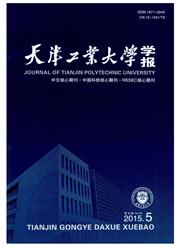

 中文摘要:
中文摘要:
以市政自来水为原水,对比研究了活性炭和微滤2种不同的预处理工艺对纳滤膜制备直饮水的影响.结果表明:微滤预处理工艺能够有效降低进水浊度,防止纳滤膜的生物污染,但由于其对水中有机物去除能力差,对防止纳滤膜的有机污染效果不大;活性炭预处理工艺可以显著减轻纳滤膜的有机污染,但随运行时间的延长,炭层内微生物滋生,出水细菌含量增高,会加剧纳滤膜的生物污染.通过2种预处理工艺连续运行对比,微滤后纳滤系统的膜通量在50 d后衰减为初始通量的45.3%,活性炭后的纳滤系统膜通量在50d后衰减到初始通量的72.3%.膜片污染物分析进一步证明活性炭作为预处理工艺时能够更好地控制纳滤污染.
 英文摘要:
英文摘要:
The influence of different pretreatment processes(carbon activated filtration and microfiltration(MF)) on performance of nanofiltion(NF) system was compared in direct drinking water treatment.The results show that MF pretreatment process can effectively remove turbidity,but it is not effective to control organic fouling of NF membrane.Compared with MF,the organic fouling of NF membrane can be alleviated by the pretreatment process of activated carbon filtration.But bacteria can grow and accumulate in the carbon bed with continuing operation,and the increase of total bacteria in the carbon filtration effluent will aggravate membrane fouling.By comparison of continuous running between the two kinds of pretreatment processes,NF membrane flux declined to 45.3% of its initial flux after operation for 50 d when MF was used as pretreatment process,and when activated carbon was used,pretreatment NF membrane flux declined to 72.3% of its initial flux.The analysis of pollutants in NF membrane further suggests that when activated carbon filtration is used as NF pretreatment process in small-scale systems of direct drinking water,membrane fouling can be controlled more effectively.
 同期刊论文项目
同期刊论文项目
 同项目期刊论文
同项目期刊论文
 Experimental studies on the effects of different carbon sources on phosphorus removal during denitri
Experimental studies on the effects of different carbon sources on phosphorus removal during denitri Pretreatment Process of Nanofiltration for Silting Density Index Reduction in Drinking Water Treatme
Pretreatment Process of Nanofiltration for Silting Density Index Reduction in Drinking Water Treatme 期刊信息
期刊信息
